INTRODUCTION
In our centuries-long quest to comprehend the complexities of the human body, we have often adopted a reductionist approach — dissecting systems into their constituent parts to study and understand each element in isolation. While this has led to significant advancements in medical science, it has also imposed limitations, as such a method rarely tells us how those parts operate in context — i.e., in conjunction with other elements in the system.
And it is only through understanding things in context that we can truly understand that thing.
For instance, taking an engine out of a car and studying it in isolation doesn’t tell you how the car will work. Similarly, removing an ear from the side of your head and studying it in isolation doesn’t explain how you hear.
The engine doesn’t drive you to work — the car does.
Your ear doesn’t hear — you do.
It is the interaction of the ear and the engine with everything around them that really matters.
So it has been with our understanding of what has become known as the musculoskeletal system. Most of what we know about the human body has come from breaking down complex biological systems into smaller, manageable components — and it has been no different with muscle and bone. While this method has been invaluable in uncovering the specific functions and pathologies of individual components, iit falls short of explaining how things really work in practice.
And so over the last few decades, many researchers — having reached a state of diminishing returns on the traditional reductionist practice — have turned their attention to the hard work of better understanding the relationships between bodily components. This shift towards a more integrative approach recognizes that the true nature of biological systems can only be appreciated by studying how these components interact within the whole.
For those of us in sports and human performance, this holistic perspective is crucial. It helps us understand how movement is coordinated, communicated, controlled, and connected, ultimately leading to more effective training and health and performance strategies.
A Broader Historical Perspective on Understanding Fascia
This brings us to the importance of understanding fascia.
Historically, the medical and scientific communities have focused primarily on bones, muscles, and organs, often neglecting the connective tissues that link them. This oversight is rooted in early anatomical studies, which viewed fascia as a passive, inert material. However, as our understanding of the body has evolved, so too has our appreciation for the complexity and functionality of fascia.
Ancient Greece: Early anatomists like Hippocrates and Galen documented the presence of connective tissues but did not recognize their full significance. They considered what we now know as fascia as a sort of packing material, providing support and separating different structures within the body. Galen, for example, described fascia in his anatomical writings, but his focus remained on the more apparent structures like muscles and bones [Goss, 1963; Potter, 2010].
Renaissance: Anatomists such as Andreas Vesalius illustrated fascia in their works, laying the groundwork for future exploration [Vesalius, 1543]. Vesalius’s detailed anatomical drawings depicted fascia more clearly, but the understanding of its functional importance remained limited. During this period, the primary focus was still on the major organs and systems, with fascia largely seen as a secondary structure.
Shifts in Understanding: 16th to 20th Century
16th–17th Centuries: The term fascia appears to have entered English medical discourse with Crooke’s (1615) reference to the "Fasciam or the swath-band," now known as thoracolumbar fascia. Cowper (1694) relatedly described various fasciae such as the fascia lata and fascia tendinosa, highlighting their importance in muscle and tendon structure [Crooke, 1615; Cowper, 1694, 1698].
18th Century: During this period, fascia was variably referred to as membrane or membrana. Anatomists like Winslow (1733) and Albinus (1777) described fascia in terms of its aponeurotic, membranous, and tendinous characteristics, showing a growing understanding of its diverse forms and functions [Winslow, 1733; Albinus, 1777].
19th Century: This century saw a marked expansion in fascia-related terminology and a clearer distinction between superficial and deep fascia. Notable anatomists like Bichat (1822) and Gray (1858) described fascia in greater detail, emphasizing its structural and functional importance in the body. The introduction of terms like cellular tissue and the differentiation between fibrous and areolar tissues further refined the understanding of fascia [Bichat, 1822a, 1822b; Gray, 1858].
Guillaume Dupuytren: A prominent French surgeon in the early 19th century, Dupuytren studied pathological conditions of fascia, such as Dupuytren's contracture, a hand deformity caused by the thickening and tightening of fascia [Dupuytren, 1831]. His work brought attention to the clinical significance of fascia and its role in disease and dysfunction, paving the way for future research into connective tissue disorders.
Julius Wolff: In the late 19th century, Wolff introduced Wolff's Law, which states that bone structure adapts to the mechanical loads under which it is placed. This indirectly highlighted the role of connective tissues, including fascia, in load transmission and structural integrity [Wolff, 1892]. Wolff’s work underscored the idea that tissues in the body are dynamic and responsive to stress, setting the stage for a more integrated understanding of bodily functions.
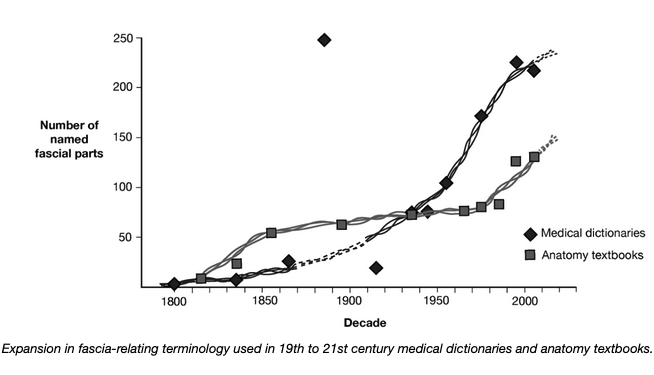
Modern Perspectives and Research
The modern era has seen a significant shift in the understanding of fascia, driven by advancements in imaging technologies and a growing interest in holistic approaches to health and movement.
C.S. Sherrington: Though primarily focused on the nervous system, Sherrington's work on proprioception and reflexes underscored the role of connective tissues in sensory and motor integration [Sherrington, 1906]. His discoveries about how the body senses and responds to stimuli highlighted the importance of the connective tissues, including fascia, in these processes.
Ida Rolf: In the mid-20th century, Ida Rolf developed Rolfing, a therapeutic approach that purports to manipulate fascia to improve posture and alleviate pain. She posited that fascia plays a crucial role in structural alignment and overall health [Rolf, 1977]. Rolf’s work was revolutionary in highlighting the functional importance of fascia and its impact on the body's biomechanics.
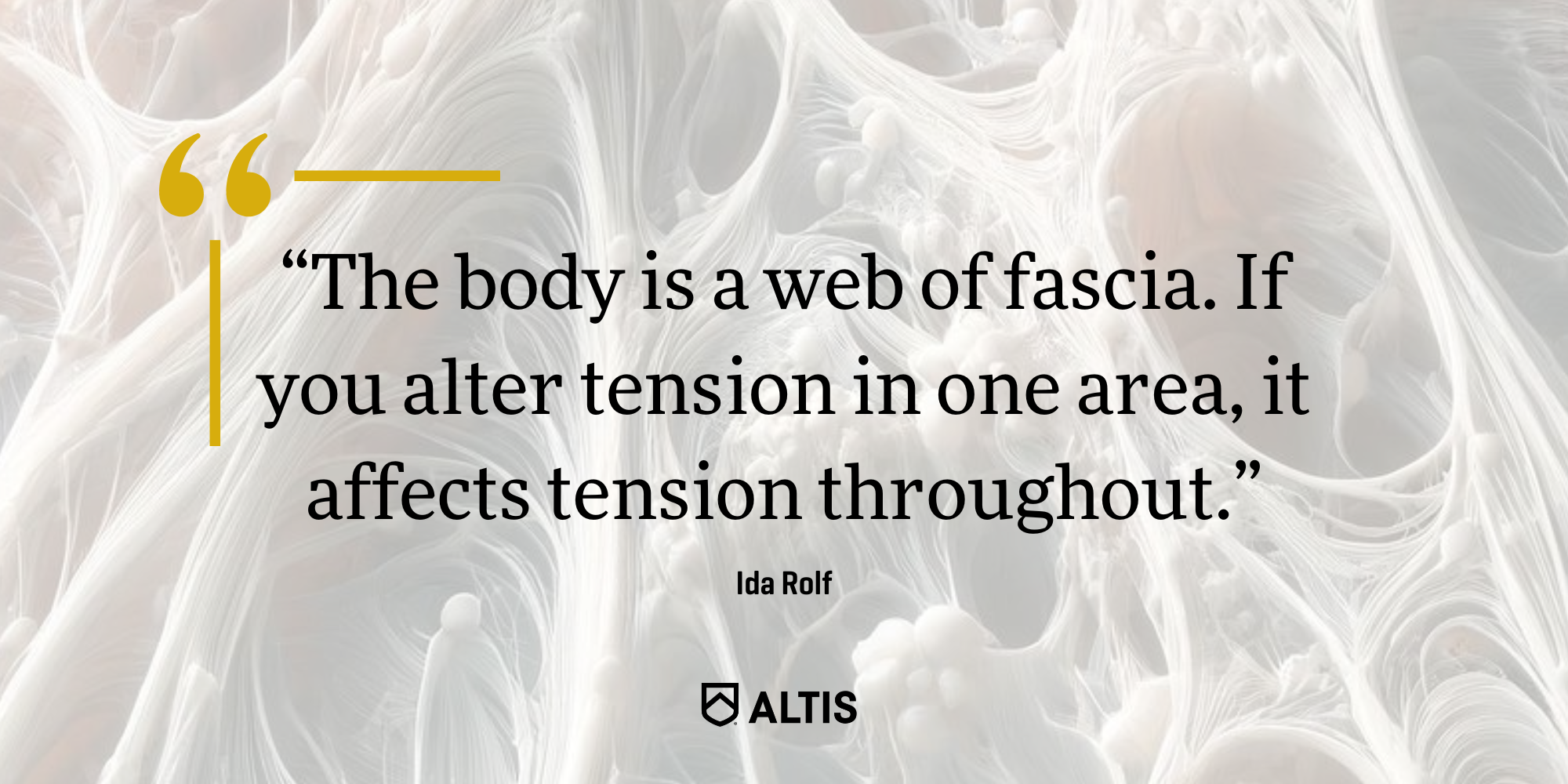
Contemporary Research and Developments
In recent years, the study of fascia has gained momentum, thanks to the efforts of the following dedicated researchers and clinicians.
Helene Langevin: Langevin’s research has utilized advanced imaging techniques to explore the role of fascia in pain and inflammation. Her studies demonstrated that fascia is not a static tissue but a dynamic and responsive one that can influence pain perception and inflammatory processes [Langevin, 2006]. Langevin’s work has significantly advanced our understanding of the biological functions of fascia and its potential therapeutic targets.
James L. Oschman: Oschman has been a significant figure in the field of energy medicine and fascia research. His work emphasizes the role of fascia as an interconnected system that facilitates communication and energy transfer throughout the body. Oschman’s studies highlight the importance of understanding fascia not just as a structural component but as a dynamic tissue involved in health and healing [Oschman, 2000].
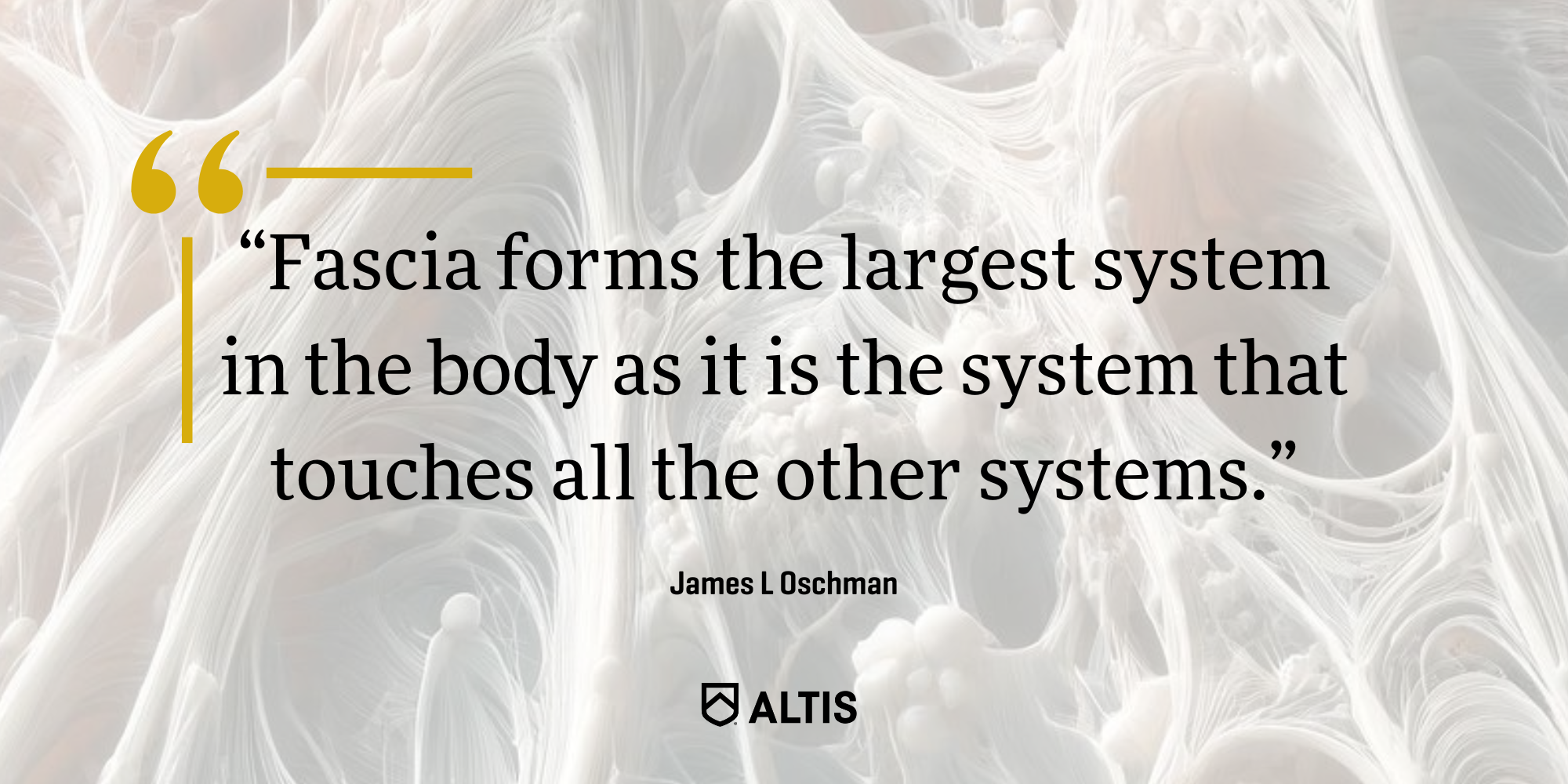
Robert Schleip: Schleip’s research has focused on the biomechanical properties of fascia and its role in movement and proprioception. He has conducted extensive studies on the viscoelastic properties of fascia, demonstrating how it responds to different types of stress and movement. His work has been pivotal in shifting the perception of fascia from a passive structure to an active participant in movement and sensory feedback [Schleip, 2003].
The Stecco Family: Luigi Stecco and his children, Carla and Antonio, have made significant contributions to the understanding of fascia through their work on fascial manipulation. Their research has detailed the anatomical and functional properties of fascia, providing insights into how fascial dysfunctions can lead to pain and movement restrictions. The Steccos have developed therapeutic techniques aimed at restoring the normal function of fascia, which have been widely adopted in clinical practice [Stecco, 2014].
Guy Voyer: Voyer is known for his work on the biomechanics of fascia and its role in overall body alignment and health. He developed a method called ELDOA (Étirements Longitudinaux avec Decoaptation Ostéo-Articulaire), which focuses on specific fascial stretching techniques to improve posture, relieve pain, and enhance athletic performance. Voyer’s approach underscores the importance of maintaining fascial health for optimal movement and function [Voyer, 2000].
Peter van der Wal: A prominent Dutch researcher, van der Wal has contributed significantly to our understanding of the anatomy and function of fascia. His work emphasizes the continuity and adaptability of fascia, exploring how it integrates with other bodily systems to support movement and function. Van der Wal’s research has helped to clarify the complex, dynamic nature of fascia and its crucial role in health and performance [van der Wal, 2009].
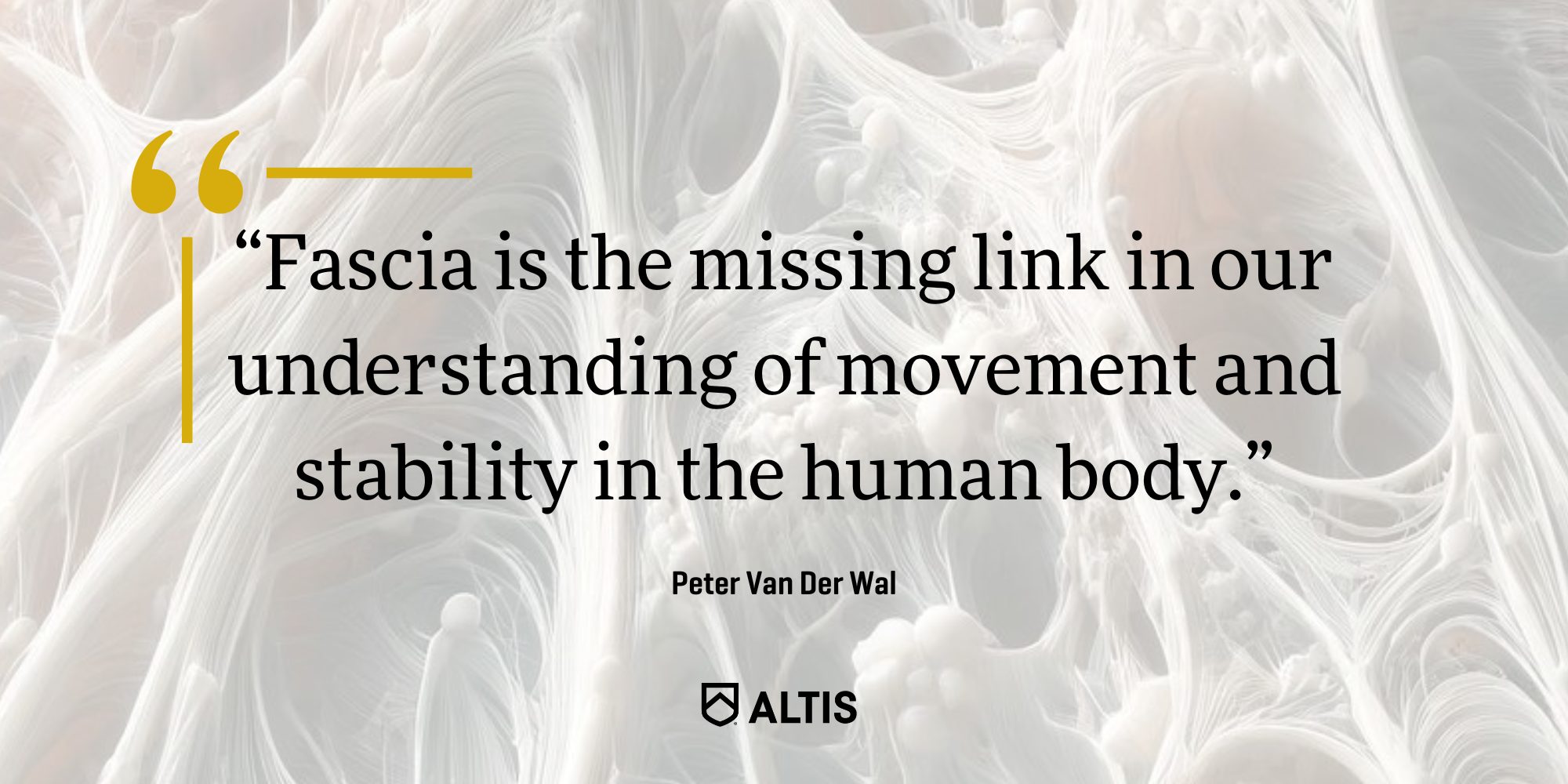
Thomas W. Myers: In his seminal work "Anatomy Trains," Myers mapped the fascial connections throughout the body, emphasizing their role in movement and posture. He introduced the concept of myofascial meridians, illustrating how fascia connects different muscle groups into functional chains [Myers, 2001]. This perspective has been influential in the fields of physical therapy, sports medicine, and movement science.
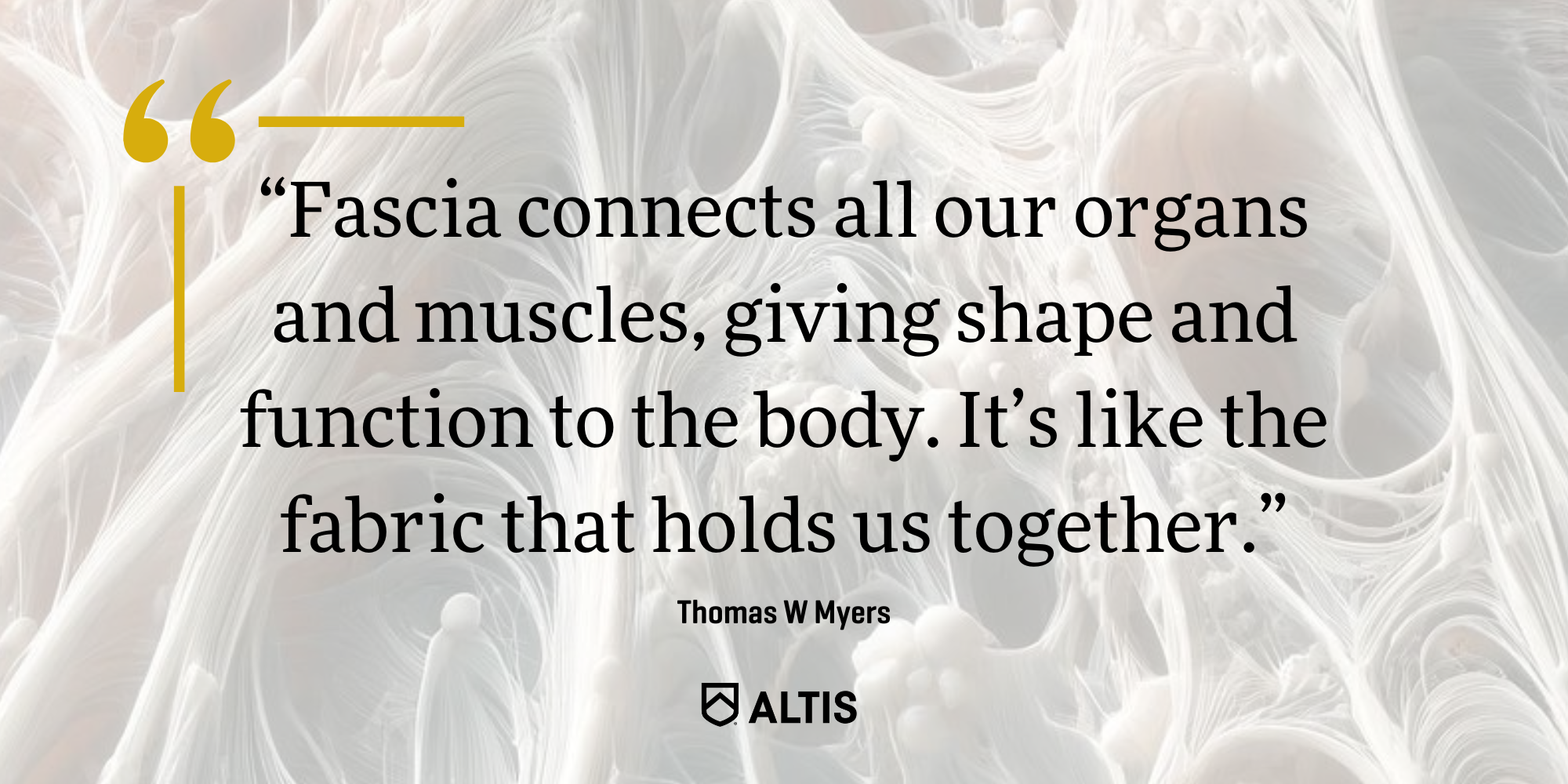
Significance of Fascia in Health and Performance
Understanding fascia from an holistic perspective helps us recognize its crucial role in maintaining structural integrity, facilitating movement, and supporting the function of other tissues and organs. This integrated approach not only informs our training and performance strategies but also enhances our overall approach to health and well-being. By studying fascia in its full context, we can develop more effective treatments and interventions, ultimately leading to improved outcomes in both athletic performance and general health.
This broader view underscores the importance of fascia in the body’s complex network, emphasizing that health and performance are not just about isolated components but about how these components work together as a cohesive whole.


